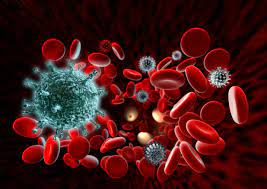Lab safety protects workers and valuable lab assets. It also helps reduce the risk of lab interruptions or stoppages. Safe lab operations depend on:
- Safe Conditions: is the space designed and laid out with safety in mind, are there trip hazards, heavy, unsecured items, etc.?
- Safe Behaviors: do the workers follow standard operating procedures and use safety equipment, PPE, etc. to reduce the risk of injuries and illnesses?
The best way to ensure safe conditions and safe behaviors is to comply with all applicable regulations. Lab
safety compliance can be very straightforward at times – but complicated and even novel at other times. Let’s start our lab safety overview by turning to OSHA and the Standards that apply to many, if not all, labs:
- Recording & Reporting Occupational Injuries & Illnesses
- Walking-Working Surfaces
- Exit Routes and Emergency Action Plan
- Personal Protective Equipment
- Machine Guarding
- Occupational Exposure to Hazardous Chemicals in Laboratories (the “Lab Standard”)
In addition, other OSHA Standards that address hazardous materials (compressed gases, flammable and combustible liquids), toxic and hazardous substances (arsenic, benzene, formaldehyde, lead, etc.) and noise exposures may apply.
Lab safety often involves hazards that are somewhat unique to laboratories, including:
- Bloodborne Pathogens
- Biological Toxins (bacteria, viruses, etc. that are found in other media)
- Research Animals
- Ionizing and Non-Ionizing Radiation
- Lab Equipment (autoclaves and other sterilizers, centrifuges, etc.)
Finally, other agencies and entities regulate labs – often by requiring them to have certain permits, including permits for:
- Laboratory Use of Chemicals
- Wastewater Discharges
- Air Emissions
- Flammable and Combustible Liquids
- Compressed Gases
- Open Flame or Hot Work
These permits are usually issued by the state (Department of Environmental Protection, Department of Public Safety, etc.) or by the Municipal Fire Department. They often have safety at the forefront, although some state and local regulations are aimed at protecting the community at large.
Safety training is an important component of lab safety. It informs lab workers of the hazards that are in their work environment and tells them how to work in a way that reduces their risk of injuries and illnesses. Finally, it educates them on the regulatory requirements, including their compliance role. Many of the regulations listed above include mandatory training requirements.
How safe is your lab? Have you identified all applicable regulations and permits? Do your Standard Operating Procedures include hazard warnings and precautions? Is your safety training customized to your lab operations and the hazards in your lab?
Cashins and Associates, Inc. can help reduce the risk of workplace injuries and illnesses in your lab. Click on the "Submit EHS Request" box to start your inquiry! One of our experts will respond within 24 hours!!



